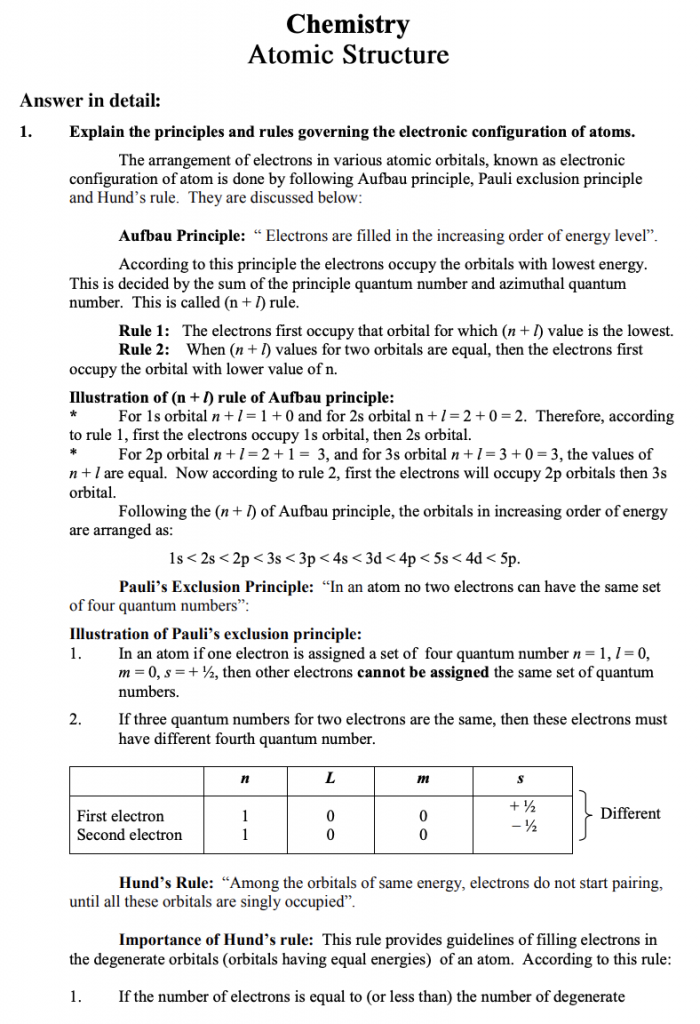Atomic Structure Details Questions and Answers
Summary:
The passage discusses various principles and rules related to the electronic configuration of atoms in chemistry. It explains the Aufbau principle, which states that electrons are filled in orbitals with the lowest energy level. The (n + l) rule determines the order in which orbitals are filled. The passage also mentions Pauli’s exclusion principle, which states that no two electrons in an atom can have the same set of quantum numbers. Additionally, Hund’s rule is explained, which states that electrons fill degenerate orbitals singly before pairing up. The passage provides examples of electronic configurations of different elements and explains the concept of oxidation and reduction in terms of oxidation numbers. It also discusses the four types of quantum numbers: principal quantum number, azimuthal quantum number, magnetic quantum number, and spin quantum number. The shapes of the s and p orbitals are described, and the modern concept of the structure of an atom is outlined. The passage concludes with examples of electronic configurations for elements and explanations of oxidation and reduction reactions based on the electronic concept.
Excerpt:
Atomic Structure Details Questions and Answers
1. Explain the principles and rules governing the electronic configuration of atoms.
The arrangement of electrons in various atomic orbitals, known as an electronic configuration of the atom, is done by following the Aufbau principle, Pauli exclusion principle and Hund‟s rule. They are discussed below:
Aufbau Principle: “ Electrons are filled in the increasing order of energy level”.
According to this principle, the electrons occupy the orbitals with the lowest energy. This is decided by the sum of the principal quantum number and the azimuthal quantum number. This is called the (n + l) rule.
Rule 1: The electrons occupy that orbital for which the (n + l) value is the lowest.
Rule 2: When (n + l) values for two orbitals are equal, the electrons first occupy the orbital with the lower value of n.


Reviews